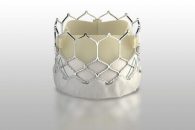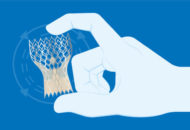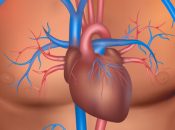Difficult to treat, tricuspid valve failure poses great medical challenge. In addition, the mortality rate of surgical treatment these days is not exactly low, involving high risk, which often takes this alternative off the table. Several percutaneous devices have been developed to treat this disease, the most popular being edge-to-edge devices. The TRICENTO has an…
The FDA Approves Sapien 3 with Alterra in Pulmonary Position
The US Food and Drug Administration (FDA) has cleared the SAPIEN 3 valve with the Alterra adaptive pre-stent for implantation in pulmonary position. According to Edwards Lifesciences, this new system developed for pulmonary valve is capable of compensating a wide variety of sizes and morphologies of the right ventricular outflow tract, allowing for stable valve implantation.…
AHA 2021 | PALACS: Posterior Left Pericardiotomy Improves Post-Procedural AF
Posterior left pericardiotomy for the prevention of atrial fibrillation during cardiac surgery seems to significantly reduce atrial fibrillation risk (AF) after procedure. The procedure consists of a 4-5 cm incision in the posterior pericardium to allow drainage of fluids and thrombi from the pericardium to the pleural cavity during postoperative period. Patients receiving the incision during surgery…
Differences in American and European Atrial Fibrillation Guidelines
The recent publication of the European Society of Cardiology (ESC) and the American College of Cardiology (ACC) guidelines provided an important update on multiple aspects of the management of atrial fibrillation (AF). However, these guidelines differ in terms of management and recommendation levels. As it might be expected, most differences arose in intermediate cases—both guidelines…
New Valvular Heart Disease Guidelines with Key TAVI and Mitral Regurgitation Updates
Valvular heart disease management guidelines were updated last week by the AHA and the ACC. The last complete version had been published in 2014; therefore many of its recommendations have become obsolete before the latest evidence. The studies that made the FDA approve TAVI for low-risk patients are probably the most important incorporations. They also…
Tricuspid valve: Is Percutaneous Intervention Feasible in Patients with Definite Pacemaker?
Courtesy of Dr. Carlos Fava. As we know, with higher life expectancy comes a significant increase in the use of definite pacemakers, defibrillators and resynchronization devices. Along these lines, the presence of catheters is associated to tricuspid regurgitation, which over time might become severe, leading to cardiac regurgitation and potentially heart failure. This group is…
PASCAL in Tricuspid Regurgitation with Encouraging Results
Courtesy of Dr. Carlos Fava. Tricuspid regurgitation (TR) is associated with higher mortality and morbidity, and it most frequently has a functional cause. Furthermore, it has been proven that tricuspid surgery has mortality rates between 8% and 20%. On the other hand, it has been verified that, in the case of left-sided disease affecting the…
Diastolic Dysfunction Should Be Considered in TAVR
Aortic stenosis increases afterload creating hypertrophy as a compensation mechanism to maintain minute volume. This leads to left ventricular diastolic dysfunction (LVDD). More than half of patients presenting aortic stenosis have LVDD and myocardial fibrosis, which is a mortality predictor in surgery. At present, there is contradicting evidence in TAVR. The study looked…
These were the 5 most read scientific articles of February
1) The CULPRIT-SHOCK Study Is Finally Published in NEJM and It Is Bound to Change Guidelines During SOLACI’s coverage of the TCT 2017 Congress in Denver, Colorado, we already mentioned some of the outcomes of this study that has arrived to revolutionize clinical practice, given the differences between its results and those of the classic SHOCK trial, which has marked…
New Light on the ‘Forsaken Valve’
Tricuspid regurgitation is frequent and mostly secondary to right ventricle and tricuspid annulus dilation. Tricuspid regurgitation has been associated to mortality increase, even though historically the importance of this valve has been disregarded compared to the other three. Tricuspid surgical repair has seen good results, but it is mostly done in the context of another valve repair. Isolated…
Tricuspid valve repair with the MitraClip technique
Current surgical and medical treatment options for severe tricuspid regurgitation are extremely limited. However, this historically forgotten valve seems to have the option of transcatheter repair, nowadays. This observational study assessed the safety and feasibility of the MitraClip system for patients with severe chronic tricuspid regurgitation. All patients presented severe tricuspid regurgitation and…










